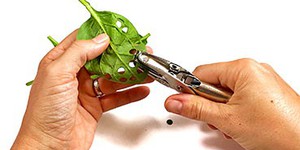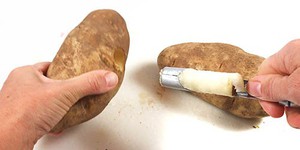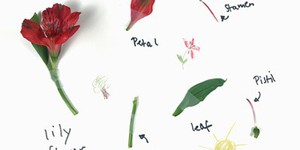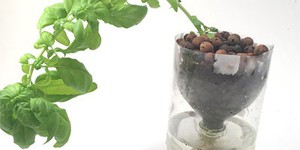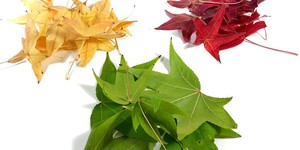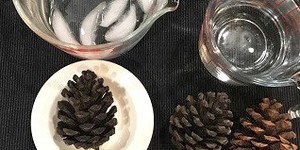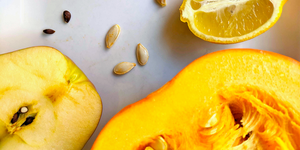Plant Biology STEM Activities for Kids (10 results)
Plants provide us with so much — oxygen to breath, food to eat, materials to make clothing and paper, and beautiful flowers and leaves to admire! How can plants be so diverse and survive in so many kinds of climates? How do they know how to grow towards the sun? Why do some plants not have seeds? Explore the amazing and beautiful world of plants.
|
Select a resource
Sort by
|
STEM Activity
74 reviews
Do you know how plants get the energy they need to grow and reproduce? They do not eat like humans and animals do; they make their own food with a process called photosynthesis. During photosynthesis, plants convert light, water, and carbon dioxide from the air into oxygen and sugars. In this activity, you will be able to observe the oxygen production in leaves by doing a floating leaf disk experiment. You can also find out how quickly plants produce oxygen, and what variables affect…
Read more
STEM Activity
39 reviews
Have you ever wondered how plants take up water from the soil? Water uptake in plants is quite complex and involves a process called osmosis. Osmosis makes the water from the soil move into the roots of the plant. But what drives the water from the soil into the plant cells? In this activity, you will do an experiment with potatoes to find out!
Read more
STEM Activity
29 reviews
Springtime is when nature comes back to life. Trees are growing their leaves again and flowers are sprouting, displaying their beautiful colors and spreading their delightful smell. But have you ever looked at a flower in more detail? What parts do flowers consist of? Are all flowers alike? In this activity, you will find out by dissecting, or taking apart, a flower piece by piece. How many plant parts do you think you can identify?
Read more
Featured
STEM Activity
59 reviews
Did you know that the seaweed you've seen in the ocean or even eaten as a snack is inspiring innovators to imagine new materials? Large
brown algae, like kelp, contains polymers—long chains of molecules—that are more environmentally friendly than the ones in most plastics. These natural polymers (alginates) could eventually be used to create sustainable everyday objects. Try your hand at using a bit of chemistry to turn biodegradable polymers from algae into your own custom…
Read more
STEM Activity
56 reviews
Do you think plants can grow without soil? If you've tried growing veggies, you probably planted the seeds or seedlings in soil. Soil gives the plants the nutrients they need to grow. However, plants can grow without soil, too, using a process called hydroponics. In this activity, you will transform a 2-liter soda bottle into a mini-garden that needs only light, air, and nutrient-rich water to grow!
Read more
STEM Activity
57 reviews
Have you ever heard someone say, "That plant is thirsty," or, "Give that plant a drink of water"? We know that all plants need water to survive, even bouquets of cut flowers and plants living in deserts. But have you ever thought about how the water moves within the plant? In this activity, you will put carnations in dyed water to figure out where the water goes. Where do you think the dyed water will travel, and what will this tell you about how the water moves in the cut flowers?
Read more
STEM Activity
11 reviews
Have you ever looked outside on a windy day and seen "helicopter" seeds spinning through the air? Or picked up a dandelion and blown on it, sending the tiny, fluffy seeds flying all over the place? Wind is very important for dispersing seeds to help plants reproduce. In this project you will design some of your own "seeds" and see which ones work best when they are blown across the room by a fan.
Read more
STEM Activity
24 reviews
Have you ever wondered why leaves change from green to an amazing array of yellow, orange, and red during the fall? Leaves get their brilliant colors from pigments made up of various color-creating molecules. During the warm, sunny months, plants use their leaves to turn sunlight into food energy, a process called photosynthesis. This primarily uses a pigment that reflects green light, which gives the leaves their characteristic color. In autumn, when colder, shorter days arrive, many kinds of…
Read more
STEM Activity
5 reviews
Depending on where you live, this time of year the ground might be covered in snow, ice, and most importantly – pinecones! We see pinecones everywhere during the winter, in wreaths, on trees, and in our yards, but did you know that pinecones have a vital job – they keep pine tree seeds safe, and protect them from the freezing temperatures during the winter!
To protect their precious seeds, pinecones can close their ‘scales’ tightly, keeping out cold temperatures,…
Read more
STEM Activity
7 reviews
Do you like your strawberry jelly with or without the seeds? Are you glad to have a seed-free watermelon, or do you enjoy spitting the seeds into the garden? You might not like finding seeds in your fruit, but fruit is a plant's tool for dispersing seeds to create offspring. In this activity you will investigate how many seeds can be dispersed for each type of fruit. Based on the number of seeds they produce, how productive do you think some of your favorite fruits are?
…
Read more
STEM Activity
Around St. Patrick’s Day the color green seems to be everywhere, from hats to shamrocks and much more in between. For this St. Patrick’s Day, you could show off your own green creation… by cloning a plant! Many Sci-Fi tales of cloned organisms have been based upon the scientific method for cloning animals or plants. In the real world, the cloning of plants is a common method used in modern agriculture. How do you clone a plant? In this activity,…
Read more
|
Explore Our Science Videos
Build a Mobile Sculpture – STEM activity
Make a Balloon Car
Build A Pizza Box Solar Oven



